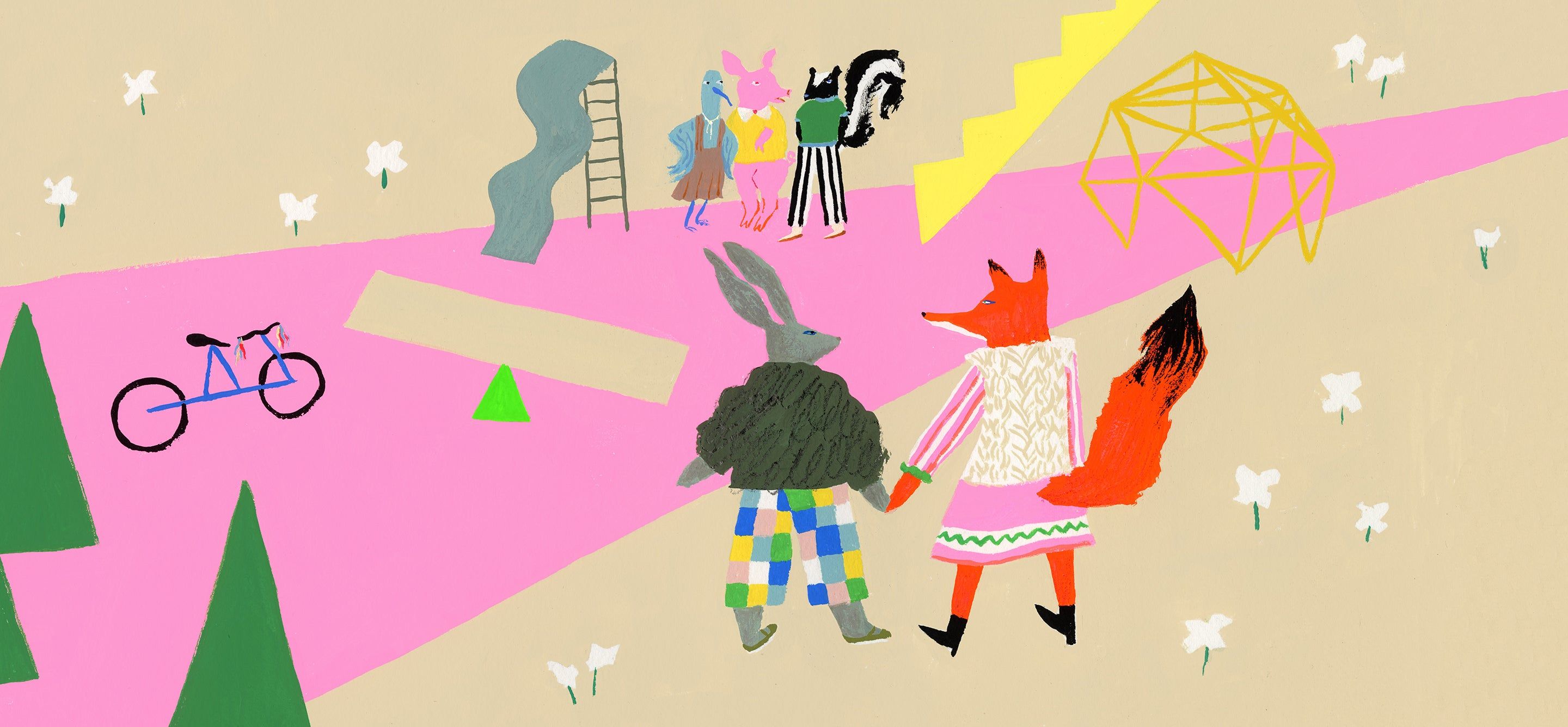
Parental Arts
How to Help Your Child Be An Ally
Allyship is standing up for others—and it’s also being a part of a larger fight for what’s right. Empowering your child to stand up against injustice starts with modeling the behavior yourself, and having thoughtful conversations from a very young age, say experts. Here’s what you can say and do.
- Written By
- Marnie Schwartz
- Illustration
- Emily Isabella
At its essence, being an ally means standing up for others. “An ally is someone who has empathy and compassion for a person or people being targeted and responds by stepping in, speaking up, and by sharing in a way that the person being attacked feels heard and supported,” says Dr. Dale Atkins, a psychologist and co-author of The Kindness Advantage.
Over the past year, we’ve mostly heard the word allyship being used in connection with anti-racism work, and it means that too. “Being an ally means that someone is part of the fight… They are at protests and marches, calling senators and congresspeople… they are doing things,” says activist, organizer, and mom Maebel Gebremedhin, creator of Moms Moving Forward and Tigray Action Committee. “There’s a lot of kinship in allyship. You become part of a larger community,” she says.
Adults aren’t the only ones who can be allies; kids can, too, says Dr. Abigail Gewirtz, a professor of family social science at the University of Minnesota, and author of When the World Feels Like a Scary Place: Essential Conversations for Anxious Parents and Worried Kids.
“Empathy starts very young—we can see empathy in babies as early as a few months old,” she says. That means that even very young children have the ability to put themselves in other people’s positions. They also have a natural desire to help others. As parents, it’s our job to help kids develop that natural empathic capacity, and then to help them understand that when they see injustice, they can do something about it.
Here are a few ways to help your child feel empowered to stand up and speak out:
Spell out your values—and show your kids how you live them
Parents can and should be really explicit about their values of non-violence and anti-racism, says Dr. Gewirtz. For very young children, you can use language like, “There’s never a reason for someone to hurt someone else,” or “We don’t say bad things about someone because of what they look like,” or “We believe all people are special.” The conversations will get more complex as your kids get older, of course, but the point is to set the groundwork for when they do.
And as much as our words matter, actions can matter even more. “It’s really about modeling,” says Dr. Riana Elyse Anderson, an assistant professor at the University of Michigan's School of Public Health who studies parenting and race-related stress. “How does that happen in your home, in your neighborhood, in your community?” When your kids see you stand up for what’s right, it gives them resources to draw on when they’re faced with similar situations."
Practice at home
When you’re reading books or watching shows with your kids, ask questions like, “What would you say in that situation?” and rehearse how they might respond. These practice sessions prepare kids for when they hear or see something that isn’t right on the playground or in the classroom, says Dr. Anderson.
Similarly, if your child comes home from school and tells you that a classmate was being made fun of and they didn’t know what to do, talk through the situation and decide together what they could have done in the moment, says Gebremedhin. Ask them, “Now that you’ve had time to think about it, what would you do differently?” The next time they encounter something similar, they’ll be prepared.
Help them understand when to speak up (and what to say)—as well as when to get an adult
You want your kids to step in for others, but that can be very intimidating. Children might be scared of becoming the next target. And of course, you want them to be safe. But if you constantly send your kids the message of, “Don’t get involved, you’ll get hurt,” they’ll never want to do it, says Dr. Atkins. Instead, send the message of, “See if it’s safe, and then these are things you can do. And if it gets out of hand, get the teachers.” Remind your child that although it can be lonely to be the one that stands up, doing so aligns with your family’s values.
Even a very young child can say, “You need to stop,” “That’s not kind,” or, “What you said was mean.” An older child can say, “Why don’t you calm down?” or, “Let’s take a breath,” suggests Dr. Atkins.
And while kids can certainly resolve some conflicts on their own, sometimes adults do need to get involved. Make a distinction between tattling and reporting, says Dr. Atkins. The first is done in an attempt to get someone in trouble, while the second is done to try and prevent someone from getting hurt.
Encourage them to comfort the child who has been targeted
First and foremost, the focus should be on protecting the child who was hurt and making them feel that they are not alone, says Dr. Atkins. “To let someone know they are cared about when they have been bullied is really important.” A child can say something like, “That must have felt terrible. What can I do to help you?” or, “I saw he pushed you, are you ok?” Reaching out with a warm gesture like inviting that child to play or talk, or putting their arm around him or her, can also be so helpful, as is checking in and following up after the fact. Because at the end of the day, “An ally is a friend,” says Gebremedhin. “A true, genuine friend.”